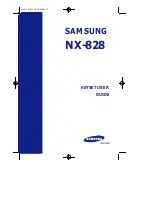
30
ASD-4
4.2.7.B Using a Modem to Dial the MODEM or FAX Port’s Access Code
Calling modems can automatically “over-dial” the MODEM or FAX port’s
access code to access the modem connected to the ASD-4, but callers must
take into consideration whether the call is local or long distance.
NOTE
In each of the dial-string examples below, callers should include the
“ATDT” prefix only if they control their modem through line commands
rather than through software.
For
local-call
remote access to the ASD-4’s MODEM port, instruct callers to
tell their modem to tone-dial this string:
ATDT (phone number),22,22,22,22
For
local-call
remote access to the ASD-4’s FAX port (when there is a modem
or fax/modem on it), instruct callers to tell their modem to tone-dial this
string:
ATDT (phone number),11,11,11,11
For
long-distance
remote access to the ASD-4’s MODEM port, instruct callers
to tell their modem to tone-dial this string:
ATDT 1(phone number),,,22,22,22,22
For
long-distance
remote access to the ASD-4’s FAX port (when there is a
modem or fax/modem on it), instruct callers to tell their modem to tone-dial
this string:
ATDT 1(phone number),,,11,11,11,11
In each case, the calling modem picks up its phone line and dials the ASD-
4’s phone number. The commas in all of these dial strings tell the caller’s
modem to wait about two seconds between attempts to over-dial the access
code ([2] [2] or [1] [1]). The extra commas that follow the phone number in
the long-distance examples ensure that extra time is allowed for the long-
distance carrier to complete the call. When the ASD-4 answers, it detects the
code tones and routes the call automatically to the MODEM or FAX port.
Summary of Contents for ASD-4
Page 83: ...NOTES ...
















































